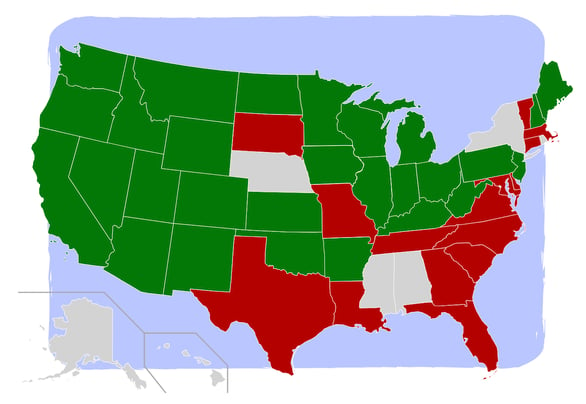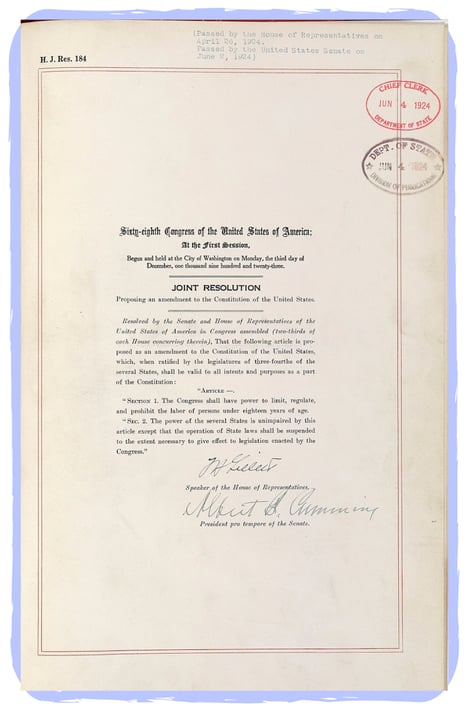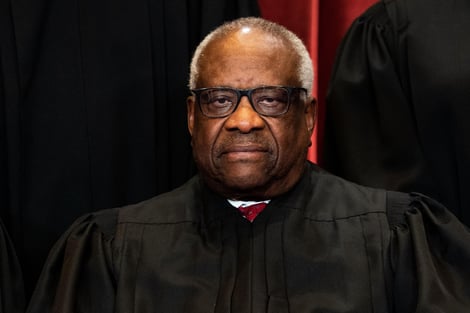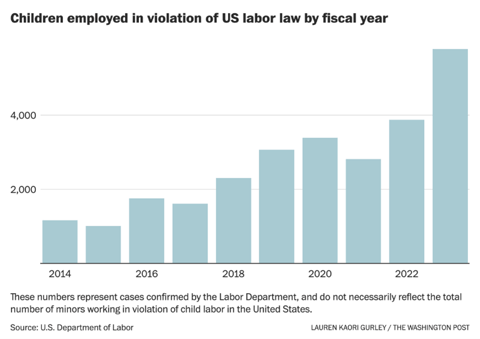The Child Labor Amendment was never ratified—it’s not too late.




Only 28 did.
But the Amendment never had a deadline.
In 2024, many states might change their stance from rejection to ratification. States like Vermont, Massachusetts, Connecticut, Georgia, Delaware, Virginia, and Maryland, all of which previously declined. And states like New York, Rhode Island, Alaska and Hawaii, which never took a position. In fact, the Connecticut state legislature’s lower house finally voted yes earlier this year–the amendment now awaits the state’s Senate.
What does this mean?
It means that the failed, perpetually-pending amendment still requires 10 more states to reach the three-fourths threshold
An amendment may seem like an extreme measure, but we are facing a three-headed threat.
As state legislators aim to roll back state regulations, conservatives at the federal level want to roll back federal regulations. All of this is compounded by the willingness of the Supreme Court to narrow constitutional interpretations, deconstruct the administrative state, and reverse precedent. Amidst this judicial and political effort, it doesn’t hurt to be too cautious.
100 years ago, there was a solution:
A Constitutional amendment that would give Congress the power to limit, regulate, and prohibit child labor. The amendment sailed through Congress and was sent to the states; three-fourths of states legislatures were needed to sign-on in order to ratify.
“If Roe v. Wade can fall, anything can fall.”
– House Minority Leader Hakeem Jeffries
The Threat
In the past three years, 28 state legislatures have introduced bills weakening child labor laws, with 12 enacting them.
In Arkansas, a new law eliminates age verification requirements for employers. In Iowa, Republican legislators passed a law permitting 14-year-olds to work on factory assembly lines and meatpacking facilities–a direct violation of federal child labor laws.
In Wisconsin, the Republican-controlled state legislature lifted restrictions on work hours during the school year, though Democrat Governor Tony Evers vetoed the legislation.
And in Ohio, the state Senate passed a similar bill unanimously.
The conservative argument has long been brewing. Former Speaker of the House Newt Gingrich called child labor laws “stupid” in 2011. Utah Senator Mike Lee has gone as far as calling child labor laws “unconstitutional,” preferring the 1918 interpretation of the Commerce Clause to the FLSA’s 1941 ruling.


The Courts
The Fair Labor Standards Act (FLSA), the New Deal-era legislation which ended oppressive child labor, relies on an expanded view of the Commerce Clause–an expansion which Justice Clarence Thomas, America’s preeminent originalist expressed disdain for nearly three decades ago.
Now at the height of his power, Justice Thomas has shown his comfort with a narrower view of the legal backing upon which the FLSA rests. “We ought to temper our Commerce Clause jurisprudence.” Thomas wrote in United States v. Lopez (1995), “Although I might be willing to return to the original understanding, I recognize that many believe that it is too late in the day to undertake a fundamental reexamination of the past 60 years.”
“To put it bluntly, Justice Thomas really, really hates the Commerce Clause,” wrote law professor James M. McGoldrick in a 2019 Loyola Law Review article. The overturning of Roe v. Wade should be a lesson we learn from–that legal foundations and stare decisis are often shakier than we might care to admit. What’s scarier is that today, Thomas is joined by a Supreme Court disdainful of the administrative state.


First and foremost, incidents of child labor are on the rise. The Department of Labor reported that violations in 2023 reached their highest level in nearly two decades—quadrupling since 2015. These aren’t isolated incidents. They reflect a dangerous shift: state legislators across the country are rolling back child labor protections, while conservatives at the federal level push to dismantle regulatory safeguards under the guise of family rights, constitutional originalism, and corporate lobbying.
This movement is bolstered by a Supreme Court willing to reverse precedent, deconstruct the administrative state, and reinterpret foundational legal doctrines—especially the Commerce Clause, which underpins key child labor protections in the Fair Labor Standards Act. With these legal and political tides turning, caution is not just wise—it is necessary.
But amid this conservative campaign, there is an opportunity. The long-dormant Child Labor Amendment—passed by Congress a century ago but never fully ratified—remains viable. It lacks a deadline and needs just 10 more states for ratification. In a moment where protections are under siege, revisiting and ratifying the amendment is not only proactive, but essential. It would be a bold, constitutional commitment to safeguarding our children and defending our democracy from regressive forces.
The Need for an Amendment


Conservative forces are working to erode child labor protections, through the courts and state legislatures. The warning signs can't be ignored with a Supreme Court that has shown disregard for precedent.




